Lunch with... Ari Vatanen
World rally champion, failed FIA presidential candidate, successful European politician... the France-based Finn is a man of many parts
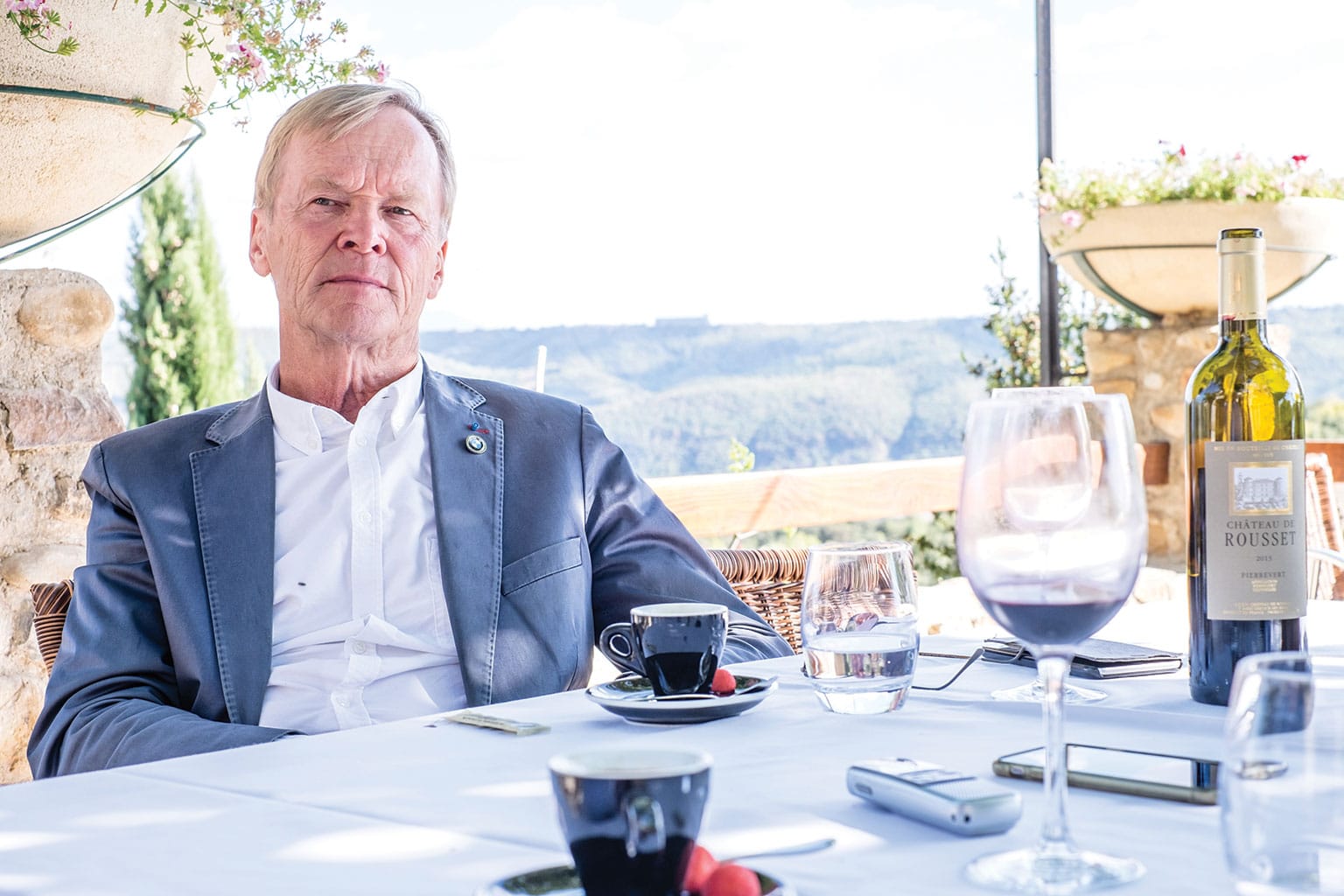
“Life without sideways is monotonous,” shouts Ari Vatanen as he slaloms up a dirt track towards his local restaurant. “We need salt in life and, for the rally driver, gravel is the salt of life. You can improvise more, you can play more, you can have more fun, you can do more sliding. People say I was not particularly good on Tarmac. I had some good Tarmac events but of course I like sliding. And of course you need to be spectacular, you need to give fun to yourself and your audience.”
Vatanen is more used to receiving pace-notes than giving them. Throughout the 1970s, ’80s and ’90s he blazed a trail across the world of rallying, winning the British championship in 1976 and 1980 and the world title in 1981. He took the helm of arguably the greatest of the Group B cars – the Peugeot 205 T16 – before partnering Colin McRae at Subaru. He took on Paris-Dakar, winning the gruelling event four times, and completed Pikes Peak in record time at the wheel of a Peugeot 405 T16, a video of which has made its way onto YouTube and made the Finn an internet star to a new generation of racing fans.
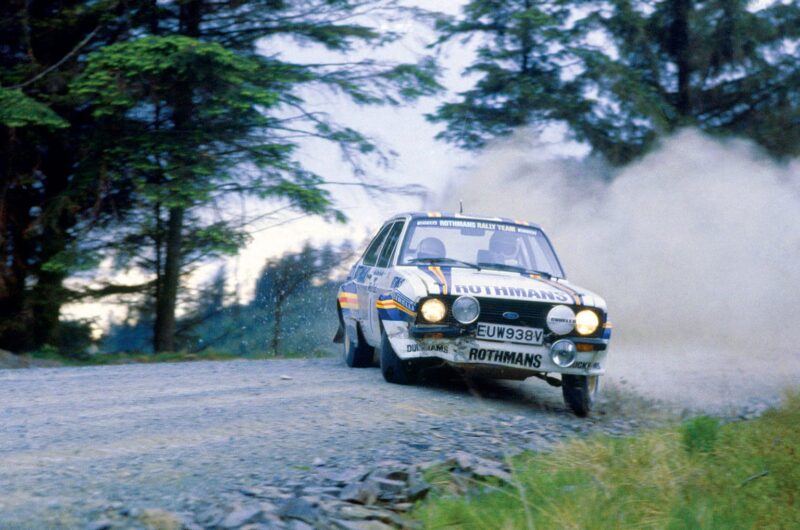
The very essence of Vatanen: fast, sideways and carrying battle scars on the 1981 Welsh Rally
Motorsport Images
More recently he has carved out a successful career in politics, as an MEP in Brussels, and at one point he stood for the presidency of the FIA against his old Peugeot team boss Jean Todt. “I love to be alive,” he says of his busy diary. “It is hard for me to say ‘no’ to things.”
In person he is not as you may imagine a typically taciturn Finn – perhaps as a result of nearly three decades in the south of France. Over lunch he is garrulous, fluent and open. “I am not like Kimi, or Juha Kankkunen. But they are not ice men really, just shy. We have a saying that an introverted Finn is one who looks at his own feet in a railway carriage; an extrovert Finn looks at the feet of the person opposite.”
Back in the car, the restaurant hoves into view and is entirely empty. La Campagne de Pêtre is only open at weekends during winter months, but has made a special exception for Vatanen, who shrugs off the compliment as no big deal. Nonetheless we will be dining alone under the cloudless skies of Provence.
“I don’t want to talk solely about motor sport and rallying, I want to talk about life!” he says as we take our seats.
Ari Vatanen was born in 1952, in the eastern area of Finland known as Tuupovaara. According to Wikipedia, the rural area has a population density of 3.7 people per square km, which is comparable with the Western Sahara (“No! It is not Greenland!” he roars when I mention this.)
He had a brother and two sisters, but his childhood was dominated by his father, Aarne. He remembers his father one day taking him to Helsinki in the family car, a Borgward, bought because the car his father really wanted – a Citroën DS 90 – was impossible to get in Finland.
It seems he inherited his passion for engineering and sense of adventure from his father, too. “In the Second World War my father was a bomber pilot flying Bristol Blenheims. He was the only person over 20 years of age in the aeroplane, to give you an idea of how stretched Finland was against Stalin. And he loved to fly low, even in a big plane, so there must have been a rally driver in him.
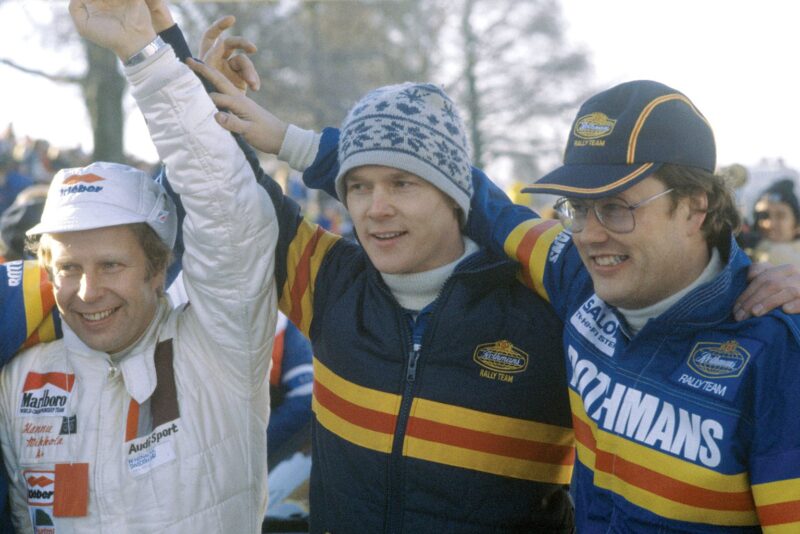
After scoring his maiden international win on the 1980 Acropolis, Ari went on to take the following year’s WRC title
Motorsport Images
“It actually got him into trouble. Once when he was coming in to land, he flew so low over a lake just before the runway that the radio antenna [which was a metal wire hung under the plane] hit a boat. The man in the boat swam to shore, called the base and my father was ordered to go to the man’s house and apologise.
“Another time he went out in such bad weather that two or three other planes crashed and my father was the only one left. He kept on flying in the middle of the night with no idea where he was until he ran out of fuel.
“I know a bit about aviation because I fly helicopters, so I can imagine him in the middle of the night in a big Bristol Blenheim, unable to locate any airfields. He must have had some moonlight though, because he managed to land on a lake – and I know how difficult that must have been because it would have been all white. He survives, the crew survives, the plane survives. He went to the nearest house – they thought it was the Russians at first – and stayed the week. Then they made a runway, refuelled and he took off and flew back to base.”
Vatanen is animated as he tells this story, but he is more measured when asked what his most vivid childhood memory is. “October 15, which was a Saturday. My father goes to the garage to get a new wedding ring, because being a farmer his old one was wearing out. At the same time he got two seat belts fitted. The following day we go to the funeral of one of my mother’s friends in a neighbouring village. It is less than 40km away and just before we arrive at that place, over the brow of a hill comes another car and so my father brakes and we go slightly to the left-hand side and then boom. Head on.
“We four children were all in the back and I remember we all tumbled around together. My mother broke a few ribs and hurt her leg, but my father’s head hit the solid steering wheel and it breaks his neck. So he dies on the spot. And I remember seeing him leaning against the wheel and he doesn’t move and someone – a bystander – says ‘Well, the driver has lost consciousness.’ I thought: ‘Ah, he has only lost consciousness,’ but he was dead.”
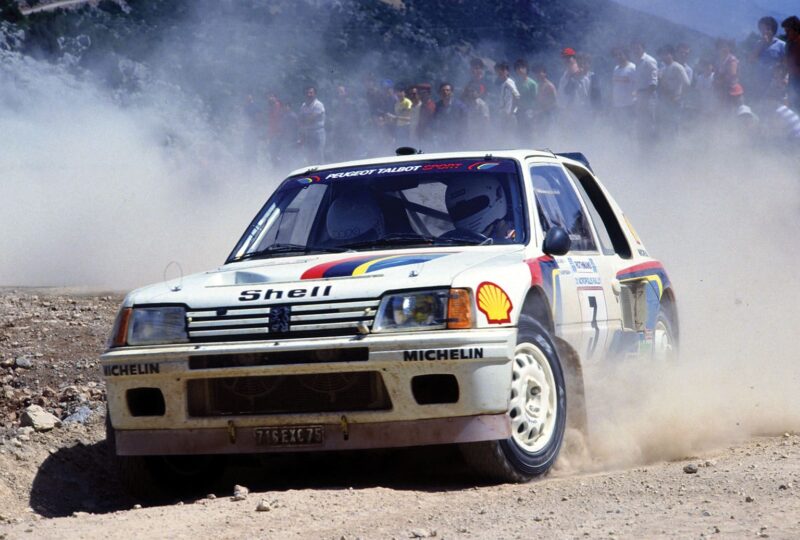
Kicking up dust on the 1984 Acropolis Rally, when engine trouble forced him out
Motorsport Images
He says that if his father, who was 42, had been wearing a seatbelt he would have survived. His mother never remarried.
The accident had a profound impact on him, but also an unusual one: “Apparently, I said afterwards that I will tame the car,” he says. “And maybe I did go on to tame the car. But I learnt also that you may be able to tame the car, but you can’t tame life. Life will tame you.”
As a child he remembers being obsessed with rallying. “The first time I saw a rally was 1964 in the middle of June, when one came for the first time to Tuupovaara. At 2am, in Tuupovaara in June, it is a fantastic light, half night and half day… and in that fantastic light they came…
“I waited until 10pm when the rest of the family had gone to bed then went by bicycle. I got to a bank on a long left-hand corner and waited four hours before the first car came. And then in the summer Finnish light the first Volvo 544 comes with the drum brakes glowing hot as it goes around sideways. That night my spirit went with the car and my body stayed on the bank.”
His mother was not impressed with his rallying ambitions, but did not stand in his way, and he passed his driving test on his 18th birthday. And in October 1974, while studying at technical college, he gained his first taste of proper competition. “There was a rally in my home town, and I entered. Hannu Mikkola was also there, with Timo Mäkinen as his co-driver. After the first stage, Mäkinen asked who’d been second fastest and someone replied: ‘You were. A young guy called Vatanen was quickest.’ They couldn’t believe it. After that Mikkola took it more seriously and won the rally while I came second, but that was the start.”
Later that year, he went one better. “There was another rally in the area and on that occasion Hannu Mikkola came and I beat him by seven seconds in my Opel Ascona. He was in a Ford Escort. After that rally I didn’t go to college on Monday morning, I didn’t go at all any more. I thought I’d just stay close to the telephone and they’d start calling me from various parts of the world.
“They did not call. Nobody called.”
It was a tough time for him, he says now. He had quit college to gamble on a professional rally career that appeared to have backfired. His girlfriend had split up with him leaving him, as he says, “broke heart wise and money wise”. He had been forced to take a job selling books door to door in the Finnish winter. “I was in a hole. I remember I stopped at the side of the road one day and cried. Then in early 1975 I came home to my flat and there was a letter waiting; a hand-written letter from a man called John Thomas.”
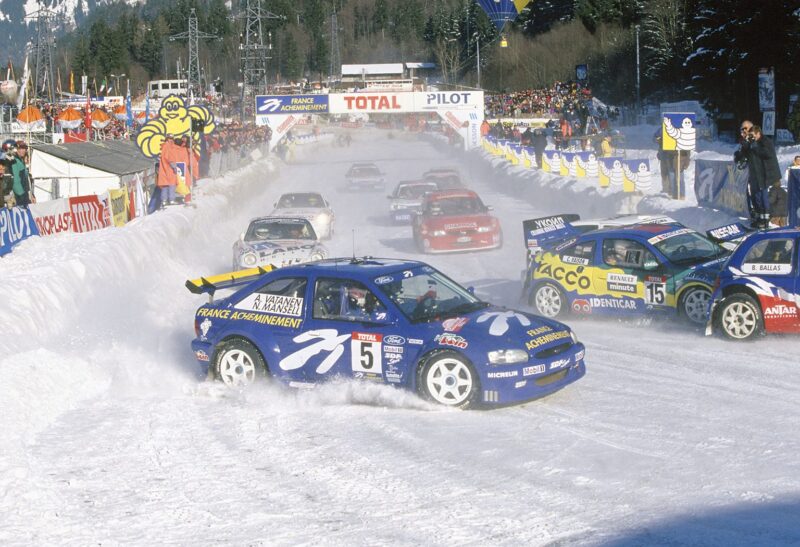
When Nigel Mansell made one of his early comebacks, in the Chamonix 24 Hours, Vatanen was assigned to co-drive their Escort
Motorsport Images
Dear Ari,
Having spoken to Gerry Phillips of Motoring News about your lack of sponsorship, he has told me to write to you regarding the Welsh International Rally, run from May 9th to 11th 1975.
After speaking to the local Opel dealer about sponsoring yourself and I in your car for the event, if of course you should be prepared to have myself as your co-driver, they would be very interested in backing us for the said event, providing it would be within their budget. When they asked what sort of cash would be required I said about £250 to £300 for this event. The Welsh entry being £60.
Yours faithfully,
John Thomas
Vatanen didn’t need to be asked twice. “I put my battered Opel on the boat and went to the Welsh Rally. That is thanks to John Thomas. We only did one rally together, but without John Thomas I would not be here. He is Mr Nobody in the who’s who book of motor sport, but he is crucial. John made the difference. I still speak to him every month.”
Thomas may have lured Vatanen to the UK (the pair finished 24th in the Welsh Rally, won by Roger Clark and Jim Porter in a Ford Escort RS1800 MkII) but it was Vatanen’s relationship with David Richards that would come to define his early career. He first met the man who would go on to run Prodrive in a bar in Jamaica in 1975, during his first international rally: “I’ll never forget it. He said: ‘I’m David Richards, professional co-driver,’ and I thought to myself, ‘Wow, even the co-drivers are professional’.”
The pair hit it off and together entered the Scottish Rally, going up against Mäkinen, Mikkola and Clark and running in the top three for much of the event. In his biography, Richards recalls, “This car should have been far behind everybody else’s but Ari was just extraordinary. But it did rather fall to bits. It had holes in the floor, which meant we were hit by stones coming through. I think we finished seventh or eighth and Ari got the man of the rally award.”
Vatanen had also caught the eye of Stuart Turner, Ford’s motor sport boss, who offered him a drive for the 1976 season. “I will never forget seeing the three cars and one said Roger Clark, one said Timo Mäkinen and one said Ari Vatanen. I thought such things did not happen in real life. It was very much a learning curve, not just as a driver but also as a human being. Everything was a novelty.”
At the wheel of the Ford Escort RS1800 Vatanen quickly became a favourite of British fans. His temperament and penchant for going sideways made him a cult figure. It is a time he remembers fondly. “I don’t know why British rally fans liked me so much. Maybe it was because I was committed and liked to slide. I do remember that in those early years, even when I was starting about 25th, the crowds would stay at the best bends to wait for me, rather than move along with the leaders. The Escort was fantastic to drive too – you took it fast in to the bends, brake late and see what happens. You needed to push. Very often I didn’t finish rallies; it meant I had a rich life but poorer contracts.”
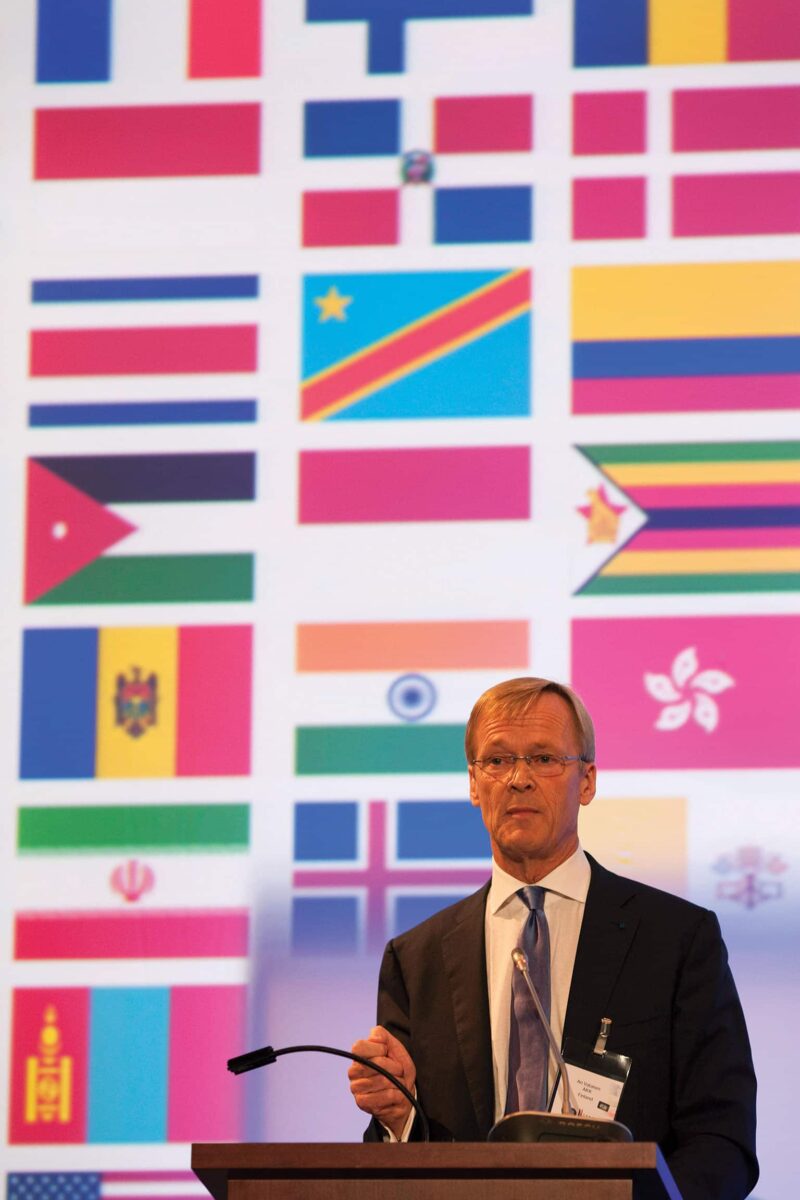
At the end of Max Mosley’s FIA presidential reign, Vatanen pitched for the role but lost out to Jan Todt for 2009
Motorsport Images
Despite his frequent mishaps Vatanen rewarded Turner’s faith by winning the British championship in 1976 with Peter Bryant as co-driver, then again in 1980 with Richards. His first international win came that same year with victory on the Acropolis Rally. His relationship with Richards was blossoming, too, with the two men and Richards’s future wife Karen forming a close bond. Looking back today, he says that he always knew Richards would do more than just compete. “He is the Richard Branson of rallying. He was always dynamic in that way of spotting opportunities that others didn’t. For example at that time in Finland we had rally jackets, I think called Happy Times. They were well made from cotton, but in England everyone was wearing these plastic jackets that were really horrible and squeaked when you moved. The next thing I know he had done this big deal to import them. I said: ‘You could have told me about it!’
“Once we saw a fighter pilot going fast through a Welsh valley and David and I both share a passion for flying. I said ‘Wow, that must be fantastic going that fast.’ And I always remember David sayng: ‘Yes, for a while. But not in the long run.’ Because David wants to have a project to run, rather than just flying. He is a man who wants to build something.”
The pair soon became a force to be reckoned with in the world championship, too, winning the 1981 title in the last rally of the season. “Before the start Jean Todt was leading the championship as co-driver for Guy Fréquelin – because of my mistakes – and we had to win that last event [the RAC]. It had happened so quickly, too, because it was only in 1980 that I won my first rally, the Acropolis.”
Vatanen and Richards came in second behind Hannu Mikkola’s Audi Quattro, but it was enough to take the championship after Fréquelin and Todt crashed out. “I have a picture at home of David hugging me at the end of the last stage – it was only after that point that we could be sure that we had won and that I wasn’t going to make a mistake.”
Because Ford had pulled out of the world championship the previous year, the Rothmans-sponsored Escort RS1800 MkII was technically a private entry. It means that Vatanen has the distinction of being the last privateer to win the world championship. He is also the last Ford driver to win the championship – a record he’d like to lose: “I hope Sébastien Ogier takes away the burden this year. It looks promising.”
Richards and Vatanen parted ways the following season, with Vatanen choosing not to defend the title but compete in the British championship instead. The two men’s paths would cross again a decade later – but the parting then would be less amicable.
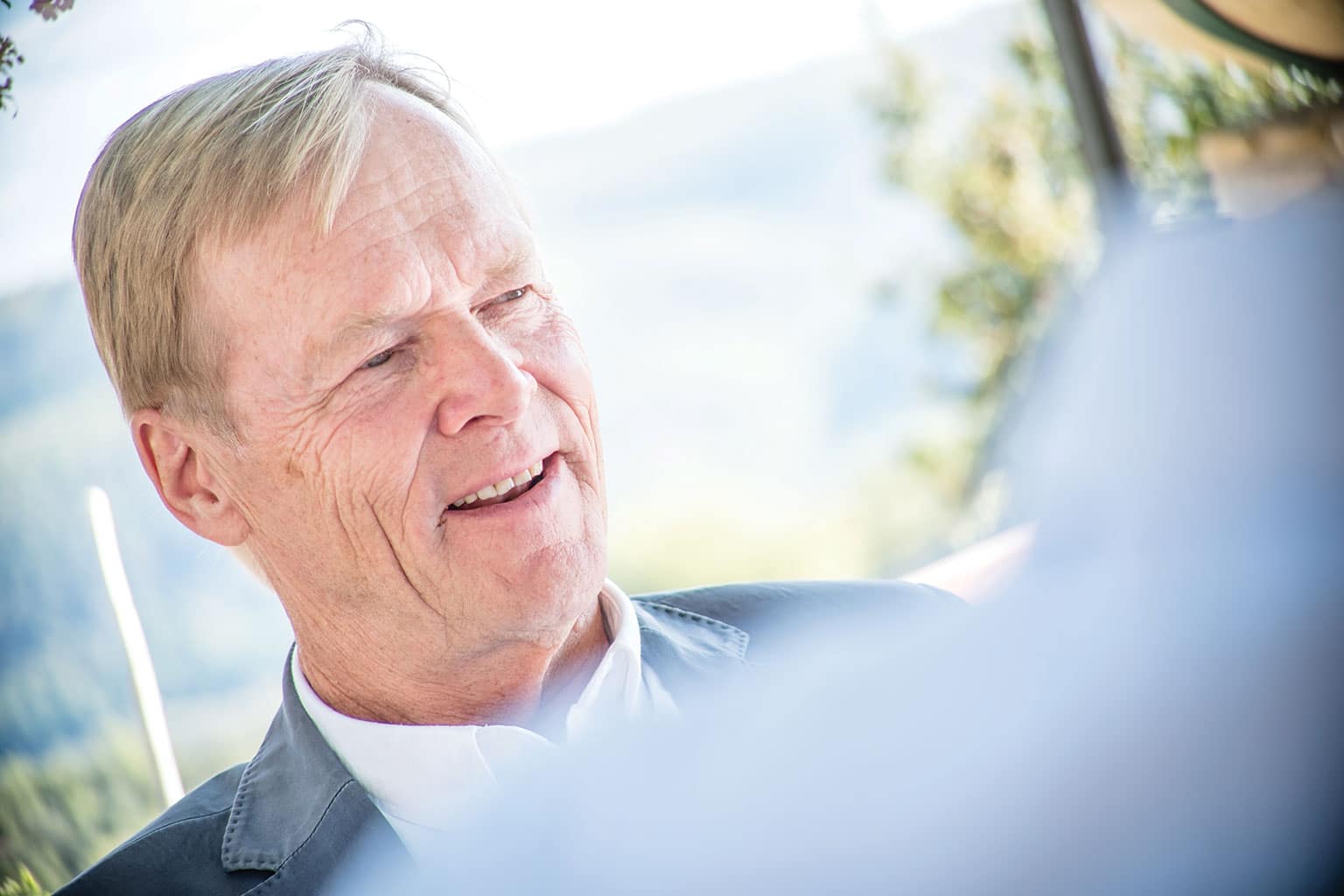
Vatanen orders the mushroom ravioli, duck breast and plum sauce and a bottle of Château de Rousset. He says that Richard, the restaurant owner, once ran a Michelin-starred establishment in Paris before relocating to Provence with his wife. “You can see why,” he says. “It is the most beautiful place. The weather, the light…”
He had said something similar earlier when we met at his beautiful house. Standing on the balcony overlooking vineyards he had gestured to the surroundings and proclaimed it the most perfect place in the world. It made him feel the joy of being alive and of life. Then he added, from nowhere, “It is a long way from the couloir de la mort,” – death row.
Couloir de la mort is the phrase uttered by Jean Todt, team manager for Peugeot, when he visited Vatanen in an Argentinian hospital in 1986. The Finn was drifting between life and death after a horrific accident.
Peugeot had signed Vatanen to a works contract in 1984, for its new all-wheel-drive 205 T16 – one of the greatest Group B cars. It and Vatanen were a potentially combustible mix. Their first rally together was Corsica 1984. On the final day he was leading Markku Alén by two minutes and contemplating winning a French rally in a French car on its first run. “We came to a left-hand bend at about 90mph and on one side the tyres were aquaplaning and on the other they were not. I swerved to the side of the cliff and we went off over the edge. The car rolled over and over and came to a rest on its wheels. I said “we’re alive” and we scrambled out, just as the car started to catch fire – because the fuel tanks were under the seats. If we had lost consciousness it would have been over immediately.”
But when it went right, the Finn and the 205 were unstoppable. Between the 1984 1000 Lakes Rally and the 1985 Swedish, Vatanen and co-driver Terry Harryman won five rallies. He was flying, and on course to win the title for a second time. Then things started to go wrong.
“Before Argentina I had had five victories. I reached Portugal and thought I’d have six, but I had a puncture and the suspension broke. We go to Safari and there was a mechanical problem and I don’t think we finished. Then came Corsica and we had two punctures on the right-hand side after I cut the corner – another big crash. On the Acropolis the steering column wasn’t attached so on the first stage the steering wheel comes off. Can you imagine?”
A second place in New Zealand set up Argentina as a must-win rally. “That’s real attack – and when you are in real-attack mode then there is no room for error.”
Speeding down a long straight the car hit a concealed dip at 120mph and somersaulted off the road. The force of the crash meant his seat broke free and Vatanen was thrown around inside, suffering severe leg injuries and potentially fatal internal bleeding. He was airlifted to hospital, gravely ill. As well as being visited by Todt, the archbishop of Finland, who happened to be in South America, also came to see him.
Vatanen made a remarkable physical recovery, but the mental scars didn’t heal so easily. He fell into a deep depression and became convinced that he had been infected with the AIDS virus during a blood transfusion and that he had infected his family.
The subject is plainly still unsettling. “You don’t overcome a crash like Argentina. You may look physically healthy, but who is to say that you are really healthy? Even the following summer I was still taking 20mg of valium a day. Occasionally I thought: ‘OK, I am not dying.’ Most of the time I thought I was dying, though, and I thought my family was dying because at that time you didn’t know how AIDS was transmitted. I thought the doctors were in a conspiracy against me. I would feel OK, but then I would revert to my surrealistic fears.”
Asked if he ever fears falling back into depression he says he doesn’t, but that young men should learn to be more open about their mental health. “I awoke from that world and left it behind me. Men should talk more about mental health because you don’t benefit from hiding. Everyone has moments… Mine was probably worse because I was under extreme stress and I was also very weak after such a bad injury. I am confident that it was part of my accident.”
He is equally clear-eyed about Group B, saying that it was right to ban it but that it was a good thing that the regulations had existed. “Group B was not reasonable but it had to be done. You can’t stand still because you then go backwards. You only find added value by taking risks. People now don’t like taking risks, we want to forbid everything. That is crazy. Life is full of risks. Group B was one of the ways we learn. But we need to protect the people watching. The crowds parting like a sea and touching the car… totally unacceptable. Totally unacceptable.”
For the record, the last two words are said with a shake of the head and a nostalgic smile.
EIGHTEEN MONTHS LATER, Vatanen was back behind the wheel of a Peugeot. This time, though, it wasn’t for a rally but the Paris-Dakar. Taking on the most gruelling event in the world isn’t the most obvious comeback option, but Vatanen feels it made perfect sense. “It was so popular, and when it went through Africa it was an amazing event. On the section from Paris the road was lined with people. It was incredible and I was there thinking: ‘I am alive, I am alive!’
“I knew I had a bit of a reputation, especially after the accident and so I said to myself that I’d drive slowly, I was overtaken by someone and I thought ‘let it go’…. And then suddenly the front of the car collapses and I could see people in the crowd saying ‘Look at this Vatanen, he must be crazy this is a 13,000km race and he has broken the car after 2km.’ I crawled to the end of the stage and everyone passed me.
“Jean [Todt] asked what had happened. I didn’t know but pointed out that this time it wasn’t my fault. They found out later that clips hadn’t been fitted to ball joints in the front suspension, so on the first bump the socket popped out. Result? I was 275th or something. Every truck and bike was in front of me and it meant I had to overtake, which is dangerous because if you leave the track to pass you don’t know what will be there – holes, rocks anything. But I had no choice, little by little I moved up and eventually I won the event.”
It was an amazing achievement, and testament to Vatanen’s bravery as well as skill. In fact, he went on to win the Dakar a further three times. He also conquered Pikes Peak, the American hillclimb, in record time at the wheel of the monstrous 600bhp 405 T16. The award-winning film of the attempt, Climb Dance, is still the definitive account of the famous ascent. Even today, he says, people in the street hail him by placing their forearm over their eyes, mimicking the breath-taking moment he takes one hand off the steering wheel to shield his eyes from the sun, just as another sheer-drop bend approaches.
But rallying has always been his first love. Although he was never to win another world championship rally, he competed hard with Mitsubishi in the late 1980s and then with Subaru, between 1992-93, when he was Colin McRae’s team-mate.
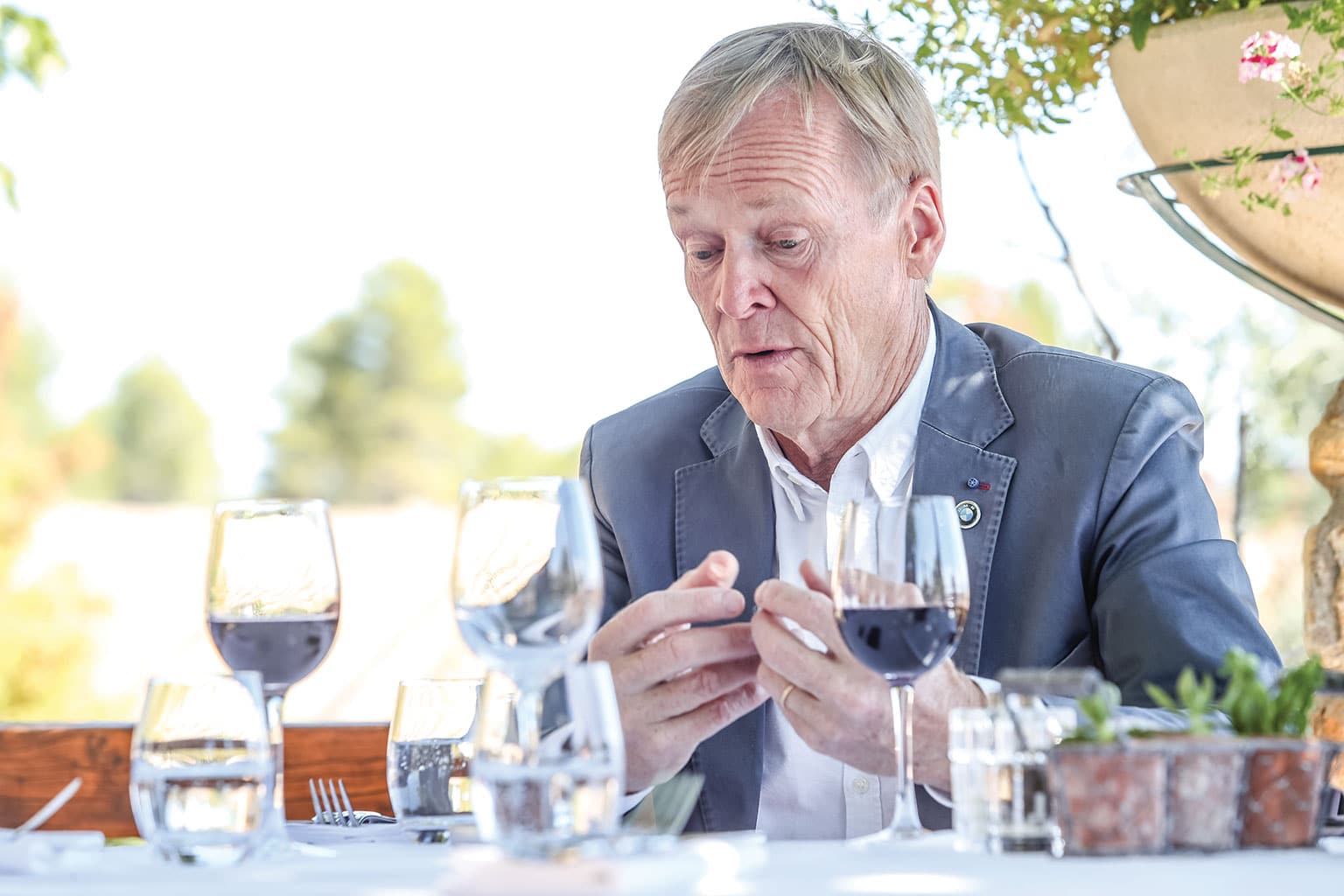
“Colin was not a polished talent. He was very much like myself in driving style, not very calculated and professional in that sense. And that is why people like him – and me. They can watch him rise, crash and rise again. You can respect a perfect champion, but not love them.”
His time at Subaru is remembered more painfully for the manner of his departure, however. The move had initially seen him reunited him with his old co-driver Richards, whose Prodrive business was running the Subaru world rally team, but the relationship was not to last. After 11 events, he was unceremoniously dropped.
“At the end of 1993 David took Carlos Sainz, not me, and I was out in the cold. That is one of those frozen frames. I was staying in Banbury when David told me and was supposed to be meeting Rita in London but I could not tell her; I didn’t want to spoil the evening. In the morning Rita finds me crying and then I had to tell her. But that is what happened. It was more painful because of my history with David of course, but c’est la vie. There are no hard feelings.”
Later, he is effusive in his support for Richards in his new role as chairman of the MSA, saying that he will be the best thing to happen to British motor sport.
IT IS ALMOST TIME to leave the deserted restaurant. There is much we haven’t discussed, not least Vatanen’s political career, his challenge – shortlived and ultimately doomed – to Jean Todt’s appointment as FIA president and his role in Estonian motor sport. But it is not hard to see why Vatanen enjoys mixing with the great and good. He has an easy charm and a finely tuned political antenna that covers a lot of ground: our conversation embraces everything from tomato import duties to immigration and Brexit (“a slap in the face of history”).
One thing has been nagging, though: it so happens that two days before our lunch Ari’s son Max had been involved in a serious accident during the Rally of Spain. He had hurt his shoulder but was not seriously injured. What does Ari think of his son’s career choice? “I never encouraged nor discouraged him,” he says.
And for someone who talks so often about how important his family is, does he ever think about what he put his family through during his own driving career – knowing as he does what it’s like to grow up without a father? “It is a justified question. Living without a father takes its toll and I find it still catches you out. Of course it leaves a mark on you. Maybe you are not as complete as a human being.
“Am I selfish to put family though it? I made mistakes but I never did any foolhardy things. If I had tried to learn to be a responsible father and husband… Of course, rallying is selfish in some ways but on the other hand it is how life calls you. If I was to judge my life purely on how many victories I had then you could call me selfish, but I don’t, I judge myself by my family. I don’t regret what I have done.”
Pause.
“But yes, perhaps I should have braked a bit earlier.”
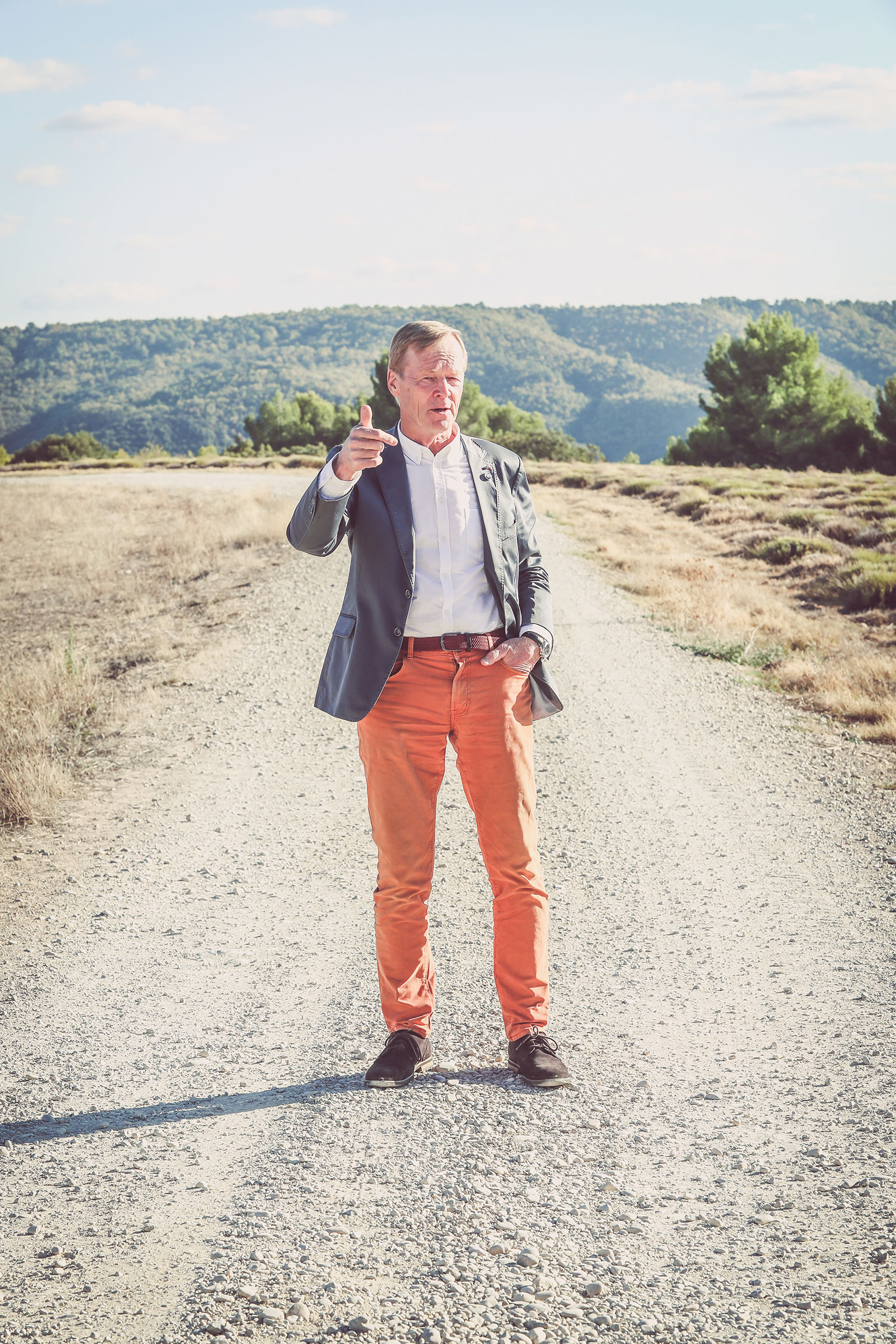
1970 First rally start 1974 WRC debut, 1000 Lakes 1976 British rally champion 1980 First international win, Acropolis; British rally champion for a second time 1981 Wins WRC, co-driven by David Richards 1983 Safari Rally winner, Opel 1984 Joins Peugeot, three wins in 205 T16 1985 Two more victories, but season curtailed by serious accident in Argentina 1987-91 Four Paris-Dakar Rally wins in five attempts, Peugeot 1998 Final WRC podium, Safari 1999 Elected to European parliament 2007 Last WRC start, Finland 2009 Beaten to FIA presidency by Jean Todt

